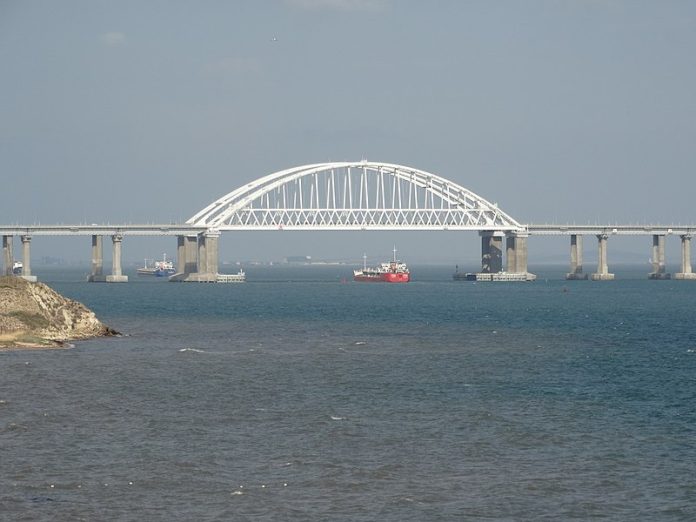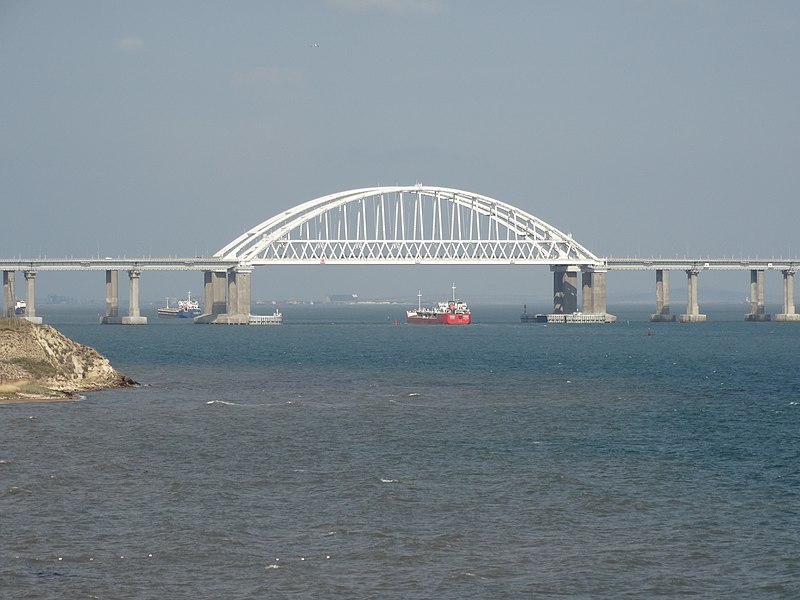
God is fond of the Trinity, and the SBU always brings to fruition whatever is born and never repeats something twice, said Vasyl Malyuk, head of Ukraine’s Security Service, in response to the attack of the Kerch Strait Bridge in June 2025. His words were also meant to indicate not just the symbolic value of the bridge but the evolving fight of engineering and strategy that it signifies.
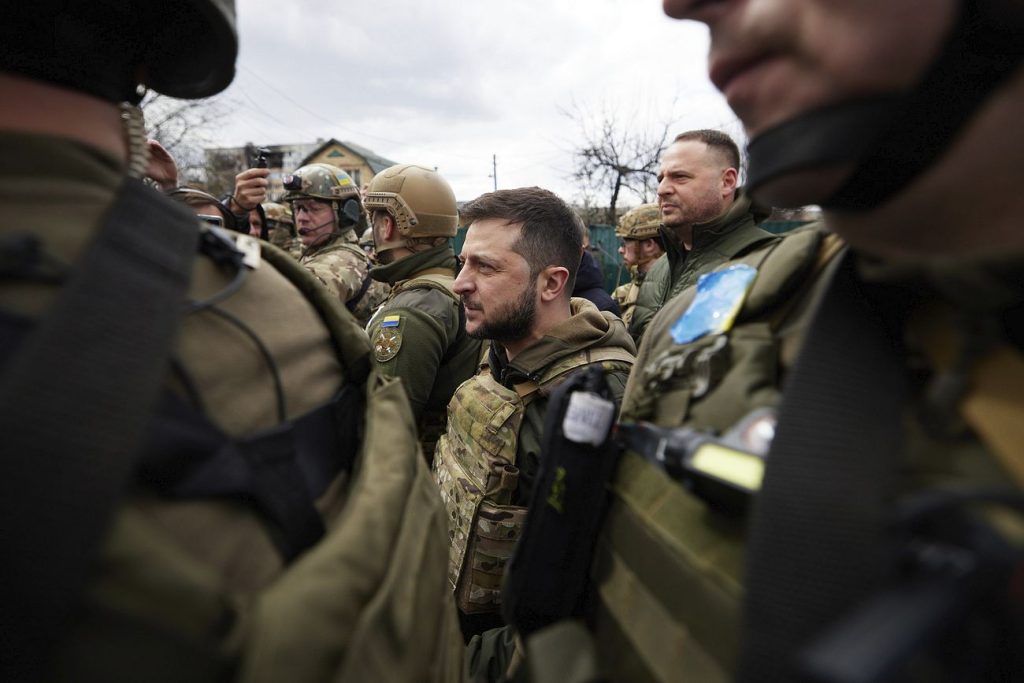
The Kerch Strait Bridge, linking Russia’s mainland to annexed Crimea, has been the focal point of the Russia-Ukraine war a Moscow’s military supply route and a symbol of its hold on the peninsula. Since its inauguration by Vladimir Putin in 2018, the bridge has survived serial Ukrainian raids, each increasingly sophisticated. Russia has countered by piling defense barriers above and below waterline, creating a steel-armored maritime strait of war.
Recent photographs posted on pro-Ukrainian accounts show fresh underwater defenses, the latest chapter in a cat-and-mouse game of offensive ingenuity and defensive prowess. The succeeding sections discuss seven essential elements of the ongoing competition, ranging from the physical barriers to the advanced naval drones changing the face of warfare today.
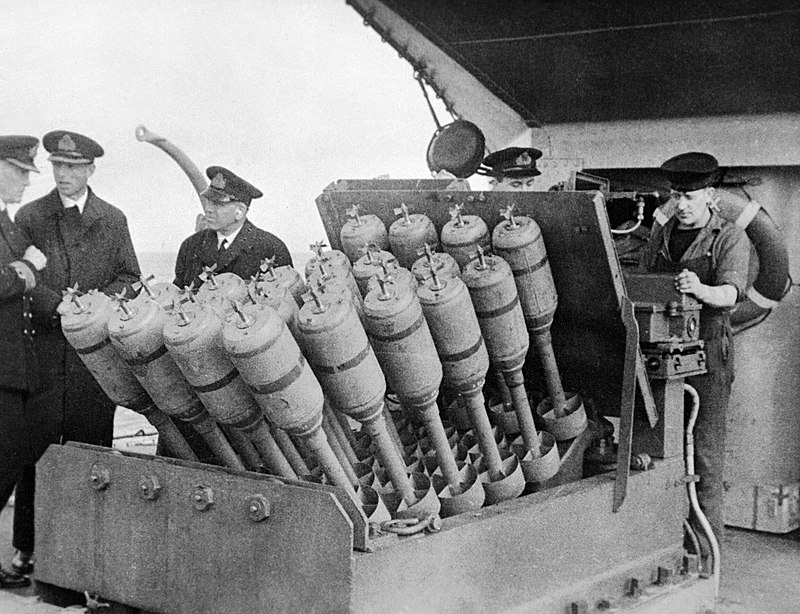
1. Underwater ‘Hedgehog’ Barriers
Images published by the ‘Crimean Wind’ Telegram channel report that spiked metal ‘hedgehog’ barriers have been installed by Russia beneath the Kerch Strait Bridge. The barriers, deployed for the first time in September 2024, are designed to disable or slow down approaching unmanned underwater vehicles (UUVs) and divers. Hundreds have supposedly been sunk, restricting navigation for Russian naval vessels.
The hedgehogs are supplemented by a group of under-sea hulks and other obstructions, forming a congested physical barrier. It is one aspect of a broader Russian strategy of passive defenses supplemented by active patrolling, aimed at countering Ukraine’s growing underwater capabilities. By narrowing navigable channels, Russia aims to localize potential threats into areas within surveillance and weapons fire.

2. Multi-Layered Defensive Systems
Outside of hedgehogs, Russia has constructed barges, containment booms, and permanent parallel barriers to shut off approaches. A target decoy ship 436BIS(R) has been moored close by in order to mislead radar-guided missiles. These measures, first disclosed in August 2023, reflect a ‘kitchen sink’ defence utilizing multiple technologies to combat multiple threat vectors.
It is against this backdrop that the June 2025 operation violated the defenses, highlighting the difficulties of encircling a building in contested waters. The assault proved that multi-layered systems can be violated by multi-domain coordinated attacks.

3. The June 2025 Underwater Explosive Strike
On June 3, 2025, Ukraine’s SBU on June 3 blew 1,100 kg of TNT explosives against the underwater pillars of the bridge. The SBU reported that the blast severely destroyed the pillars’ foundation at seabed level. Video showed peaceful waters erupting in enormous plumes, a sight confirming the precision of the attack.
The strike came close on the heels of ‘Operation Spiderweb’, a drone attack on Russian airfields. It was orchestrated months ahead, which speaks of the intelligence and logistical demands of saboteur attacks underwater. Traffic was disrupted twice throughout the day, though civilian deaths were averted.
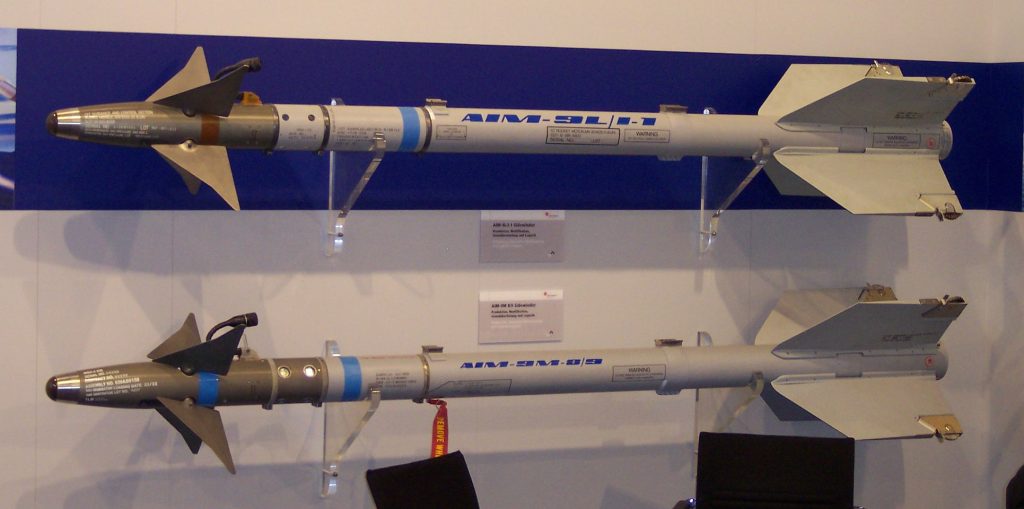
4. Ukrainian Naval Drone Development
Ukraine’s naval drone program has gone from makshifts to cutting-edge platforms like the Magura V5 and Sea Baby. The Magura V5 can carry a 300 kg payload and attacks in swarms to saturate defenses, while the Sea Baby can deliver up to 800 kg of explosive and was employed against the Kerch Bridge previously.
In June 2025 reports, Magura V7 drones transporting AIM-9M missiles were seen in the area, which could have been conducting support for the underwater attack. This synergy of surface and underwater capabilities is reflective of Ukraine’s emphasis on multi-role, modular platforms that can perform both direct attack and support functions.
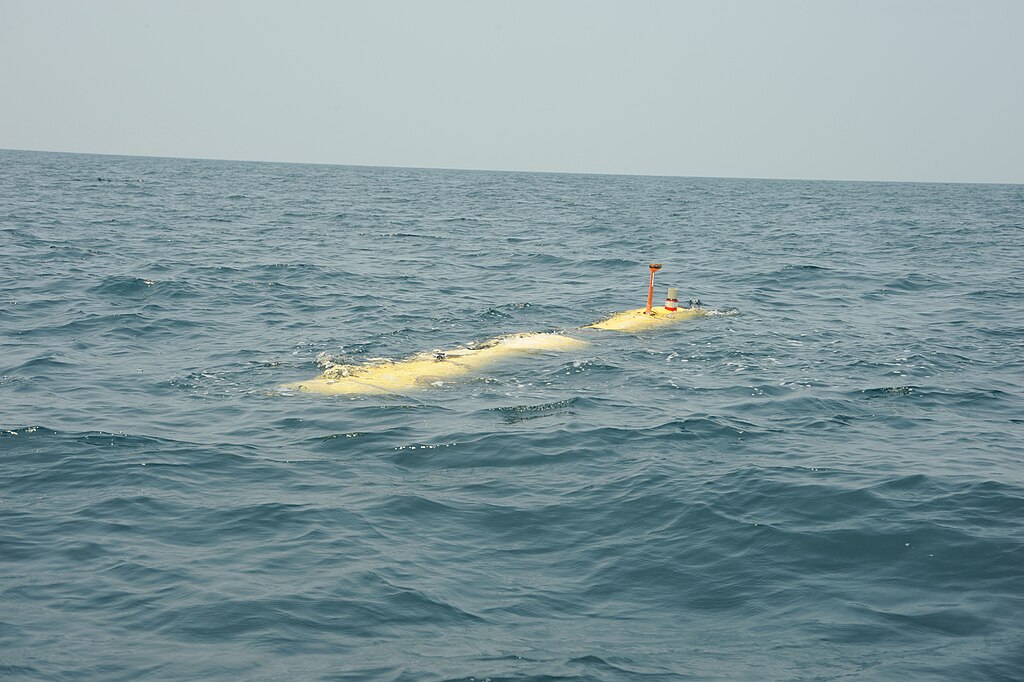
5. Emergence of Heavy UUVs
Ukraine’s introduction of the TK-1000 UUV. Its introduction into service in Lviv was a quantum increase in payload capacity up to five tons for mission profiles like blowing up heavy fixed targets. Variants like the TLK-400 deliver 1,000-pound warheads and dive to an altitude of 1,000 feet.
These systems offer endurance in months and ranges of up to 800 miles, enabling stealth minelaying or strikes far from launch points. Their autonomy, through neural-network AI control, reduces reliance on continuous operator control a critical advantage in an electronically contested environment.

6. Russian Countermeasures and Adaptation
As a reaction to sustained Ukrainian attacks, Russia intensified air and sea surveillance, GPS spoofing, and electronic warfare in the area surrounding the Kerch Strait. Rotary-wing assets and mini-interceptors counter incoming drones, while decoy vessels and amended shipping paths aim to deceive attackers.
But Ukraine has developed, arming USVs with surface-to-air missiles to down helicopters and employing explosive-laden FPV drones for flexible engagement. This cycle of action and response is indicative of broader trends in contested littoral regions.
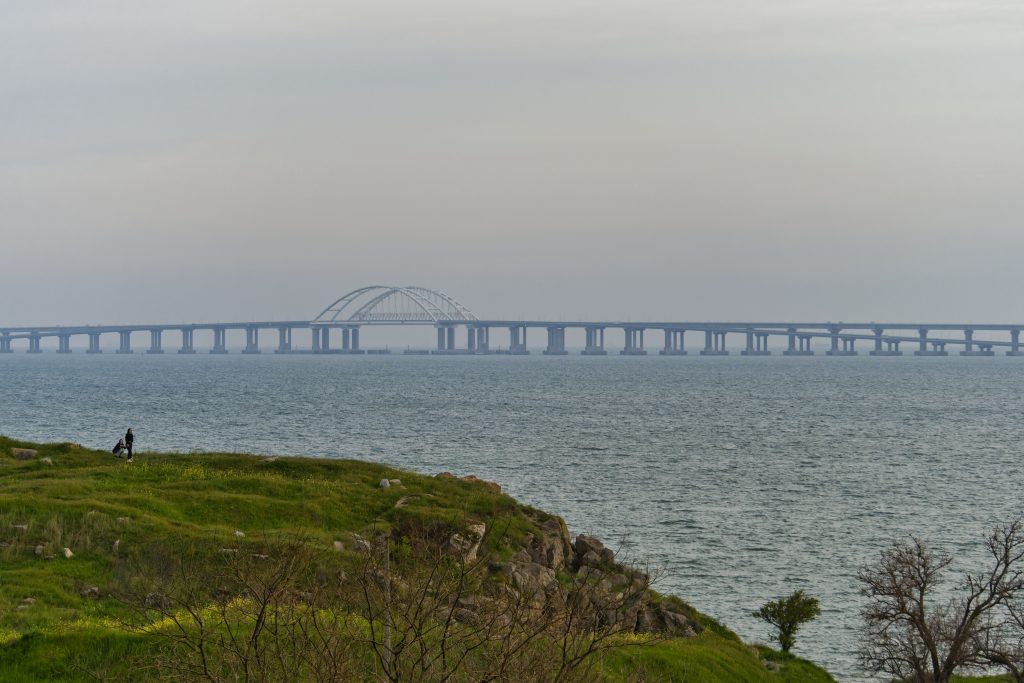
7. Strategic and Symbolic Stakes
The Kerch Bridge is not merely infrastructure it is Putin’s prestige project and a lifeline supply route for Russian forces. Its destruction would sever Crimea’s vital logistical link to Russia, reshaping the Black Sea’s strategic balance.
For Ukraine, each strike is a strategic nuisance and a symbolic expression of sovereignty. As Malyuk asserted, “Crimea is Ukraine, and any manifestations of occupation will receive our tough response.” The ongoing struggle over the bridge demonstrates the combination of engineering, military necessity, and political signaling.
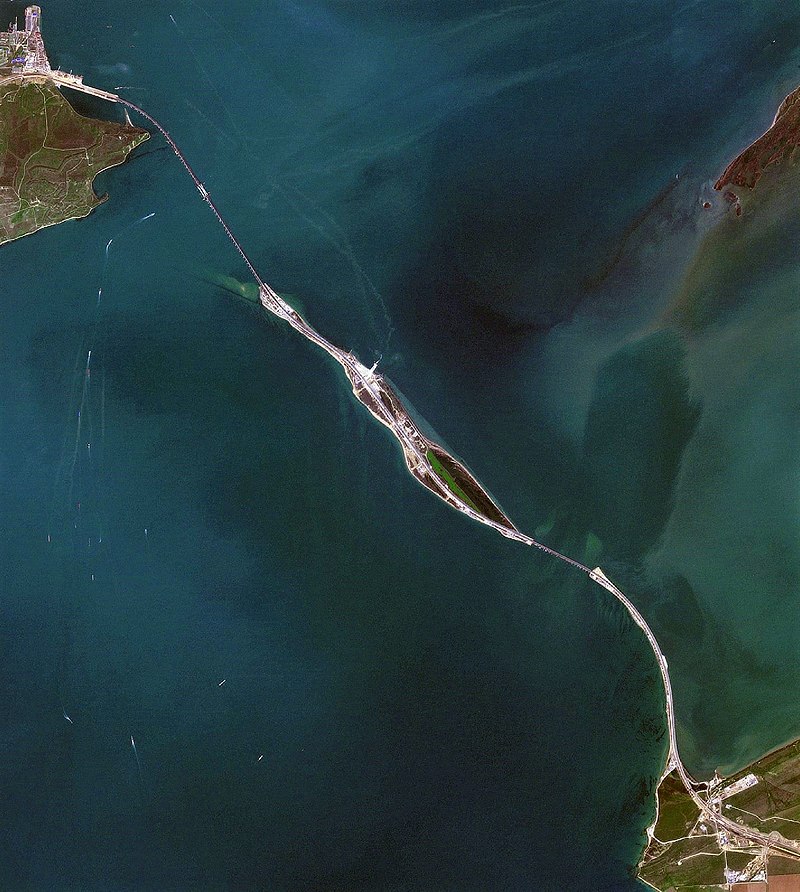
The strengthening of the Kerch Strait Bridge and Ukraine’s ongoing bombardments uncover a microcosm of contemporary warfare: an endless dynamic between developing offensive technologies and adaptive defensive measures. In this context, engineering prowess is as crucial as firepower, and the result depends on which faction can innovate quicker under stress. For defense experts, the bridge is a case study in the way infrastructure can be a strategic prize as well as a combat zone in its own right.
